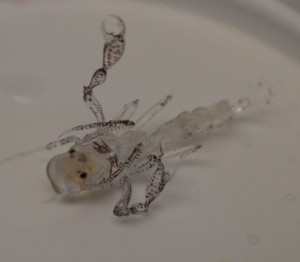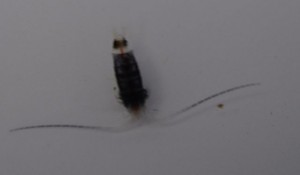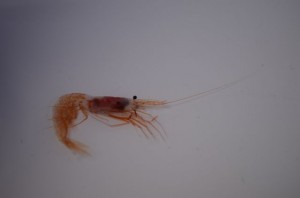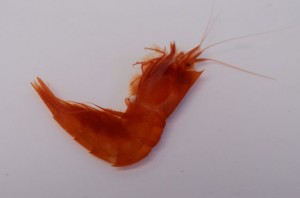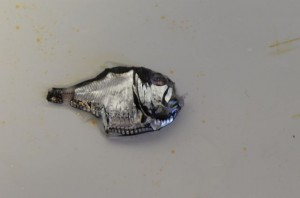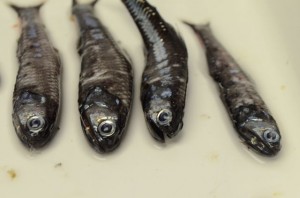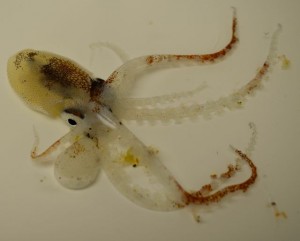In the deep, cold, and dark open oceans of the world, a diverse group of fishes and other animals aggregate. These animals are strange looking- the fish are small, with big sharp teeth, and have lures and small spots on their bodies that produce light, there are bright-red shrimp-like animals, and many different kinds of jellies. These animals live in this seemingly inhospitable environment so that they can hide in the darkness from their predators. For the fish, these predators include sharks, tunas, and dolphins- animals we would worry about if they were to lose a major source of food. The depth of this midwater layer can change with location, time of day, time of year, and other factors, but is typically around 200-1000 meters (~600-3000 feet).
Off the coast of California, waters at these depths are extremely low in oxygen, and the amount of oxygen in the water is decreasing due to climate change impacts. The low oxygen layer here seems to limit the amount of habitat that the fishes have available to them, and they stay above the areas with super low levels of oxygen.
I am interested in finding out how the continued loss of oxygen in the deep ocean is going to affect the fishes that live there. Will there be less deep-sea fish there overall? Will the fish move to shallower water? Will some species leave the area to be replaced by more tolerant species? Will their energy demands change? How will these changes affect the animals that rely on them for food?
In order to answer some of these questions, I collect animals directly with midwater trawl nets, map their distributions with echosounders, and measure their metabolic activity in the lab. On this cruise, I am using a Tucker trawl to collect fishes for metabolic activity measurements.
Here are some of the cool critters that the net has brought up so far:
CRUSTACEANS:
FISHES:
CEPHALOPOD:
Octopus.
TUNICATES (relatives of seasquirts):
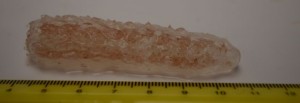
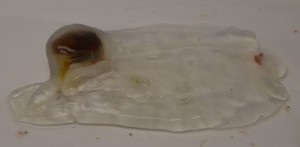 Pyrosome on left, and salp on the right.
Pyrosome on left, and salp on the right.

